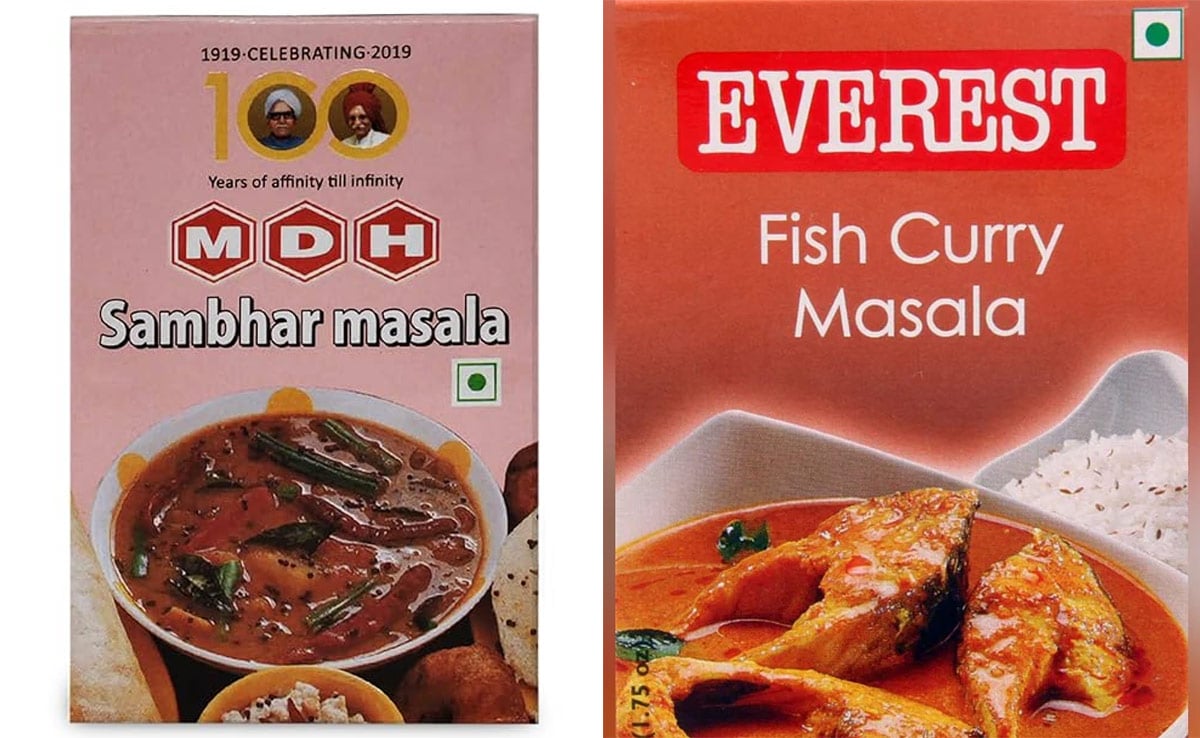
MDH, Everest spices have been banned by Singapore.
New Delhi:
Singapore, last week, took action against Everest Food Products Pvt., banning the sale of its products citing alleged detection of ethylene oxide at levels surpassing permissible limits. Following suit, Hong Kong has also prohibited the sale of popular Indian spice brands MDH Pvt. and Everest Food Products Pvt. after reported findings of the carcinogenic pesticide in several spice mixes.
What is ethylene oxide?
Ethylene oxide is a chemical compound with the formula C2H4O. It is a flammable, colourless gas with a sweet odour at room temperature. It is an effective sterilising agent due to its ability to damage DNA. But this very same quality of the compound also lends ethylene oxide its carcinogenic property.
What are the uses of ethylene oxide?
As per USA’s National Cancer Institute, “It is used primarily to produce other chemicals, including antifreeze.” It is also a chemical intermediate in the manufacture of ethylene glycol. Due to its properties, it is used as a sterilising agent for medical equipment and a fumigating agent for spices.
Why is ethylene oxide harmful?
As per The International Agency For Research on Cancer, ethylene oxide is a Group 1 carcinogenic, which means that “there is enough evidence to conclude that it can cause cancer in humans.” Ethylene oxide enters the human body through inhalation and ingestion. As per the U.S. Environmental Protection Agency, “exposure to ethylene oxide increases the risk of lymphoid cancer and, for females, breast cancer.”
Additionally, prolonged use of ethylene oxide can adversely affect the human body, Short-term effects of ethylene oxide include “central nervous system depression and irritation of the eyes and mucous membranes”, while long-term exposure can cause “irritation of the eyes, skin, nose, throat, and lungs, and damage to the brain and nervous system”.
What Singapore, Hong Kong said
In its press release, Singapore stated “ethylene oxide is allowed to be used in the sterilisation of spices” but added that ”exposure to this substance should be minimised as much as possible”. “Although there is no immediate risk to consumption of food contaminated with low levels of ethylene oxide, long term exposure may lead to health issues,” the statement said, adding that “ethylene oxide is a pesticide that is not authorised for use in food” in Singapore and can be “used to fumigate agricultural products to prevent microbial contamination.”
Hong Kong’s Centre for Food Safety said about the spices: “ The test results showed that the samples contained a pesticide, ethylene oxide… The International Agency for Research on Cancer has classified ethylene oxide as a Group 1 carcinogen,” and instructed vendors to stop sale of the affected products. They have withdrawn MDH’s Madras Curry Powder, Sambhar Masala Powder, Curry Powder and Everest’s Fish Curry Masala.
Following the move, the commerce ministry has directed Indian embassies in both Singapore and Hong Kong to send a detailed report on the matter.
Waiting for response to load…
| Denial of responsibility! Thelocalreport.in is an automatic aggregator around the global media. All the content are available free on Internet. We have just arranged it in one platform for educational purpose only. In each content, the hyperlink to the primary source is specified. All trademarks belong to their rightful owners, all materials to their authors. If you are the owner of the content and do not want us to publish your materials on our website, please contact us.The content will be deleted within 24 hours. |













